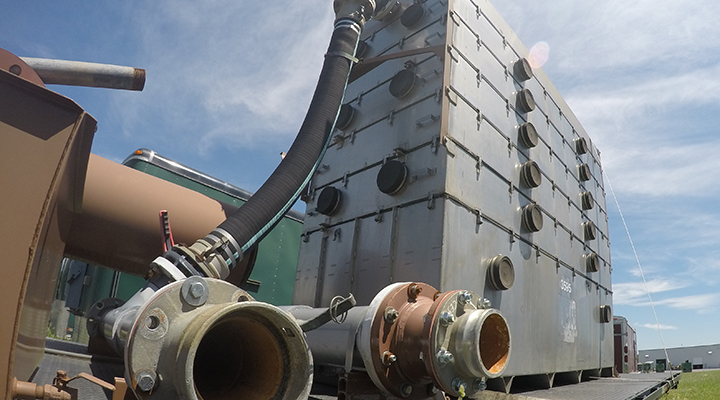Soil Vapor Extraction (SVE) & Air Sparge (AS) Systems
See All Air & Water RemediationMobile and emergency solutions for remediating soils contaminated with volatile organic compounds (VOCs).
- is the minimum order quantity for this product. Please check quantity and add to cart again.

Mobile and emergency solutions for remediating soils contaminated with volatile organic compounds (VOCs).
Description
Air sparging is a remediation process used to treat saturated soils and groundwater contaminated by volatile organic compounds (VOCs) and fuels. Air sparging uses pressurized air to volatilize hydrocarbons and enhances the biodegradation of hydrocarbons. Soil vapor extraction (SVE) may be used to make air sparging even more effective.
The major components of an air sparge system are an air compressor and a manifold. Compressed air is directed to the air sparge manifold. The air sparge manifold distributes the compressed air into the soil through well points. Other components may make the system easier to use and maintain. Compressed air is often stored in a receiver tank before injection into the soil. Fresh air usually enters the blower through a filter. Air leaving the blower often passes through a silencer.
The injected air volatilizes hydrocarbon contaminants in the groundwater, causing them to change from a dissolved state to a vapor state. As air continues to be introduced, air is forced up through the subsurface. As the air rises through the subsurface, the groundwater contaminants contact the air and are absorbed into the introduced air. The rising air carries the contaminants up into the unsaturated soil.
The air injected into the groundwater is about 20.95% oxygen. The oxygen benefits soil microbes. Bacteria use the oxygen to metabolize soil contaminants in and above the water table. This oxygen boost to the microbes may still leave unacceptable levels of VOCs in the soil gases. Various additives (nutrients, etc.) and techniques (heat, etc.) are often used to enhance hydrocarbon biodegradation.
As the air sparging system moves groundwater contaminants into the soil gas, a soil vapor extraction system is often used to remove the now-contaminated vapors. An SVE system creates a negative pressure to draw the air from the soil through extraction wells connected to a manifold. The negative pressure that an SVE system creates in the unsaturated zone may also control vapor plume migration.
The contaminant level in the extracted soil vapor is usually too high for the vapors to be released into the atmosphere. They are often run through a catalytic oxidizer or a granular activated carbon vessel to remove VOCs.
Air sparging usually works best with lighter VOCs such as benzene, ethylbenzene, toluene, and xylene. Air sparging can help clean up contaminated water under buildings or other surfaces. Air sparging injection wells must be placed for site-specific conditions, considering contaminant depth and site geology.
Evoqua has decades of experience designing and operating air sparge systems. If you have soil or groundwater contaminated with VOCs, contact us to see if air sparging is the best approach to your problem.
Features
Types of Remediation
Land Remediation
